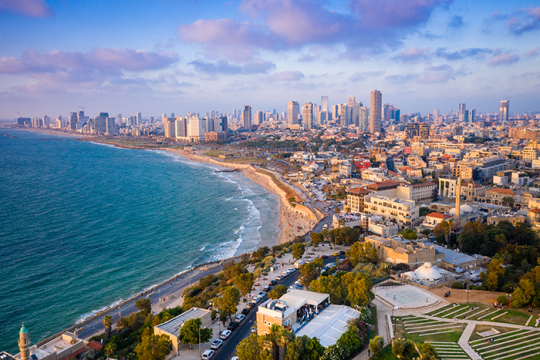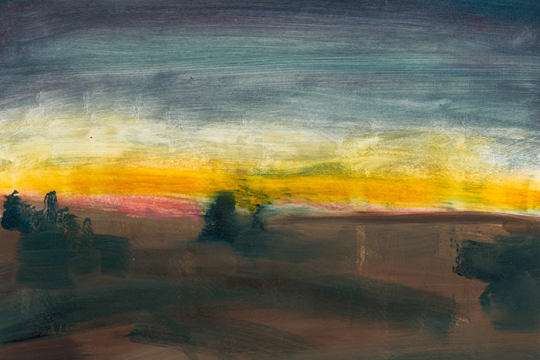TEVA Major Spotlight: The Relationship Between Judaism and the Environment
Elaina Marshalek, TEVA Major Teacher
URJ Kutz Camp
(originally posted on Kutz blog)
Teva, in Hebrew, directly translates to the word "nature," but if you asked the members of the Kutz Teva major what it means, they would express a number of different interpretations of the word. In this program, we have broken down the barriers between space that we've deemed "civilized" and the space that we call the "wilderness" - it turns out they're more connected than we thought.
From identifying the species of the area to figuring out where Kutz's food comes from, from hikes along the Appalachian trail to camping in the Catskill mountains, we've been getting to know our environment in a more conscious and thoughtful way. Combining elements of environmental ethics, spirituality in nature, and ecological knowledge, the Teva major teaches individuals to be active, environmentally conscious conscious citizens of the world. And one of the critical connections between the ourselves and our environment? By what we put into it: our garbage.
That's right, the Teva program sorted through a day's worth of trash (in our case, 414 pounds and 31 bags) at the Kutz Camp in our Teva Waste Audit!
The Procedure
Here's the quick run-down of what we did:
- Set-Up: Outside of the dumpster area, I laid down some extra trash bags as a ground covering so no waste would spill over and so that it would be easy to fold up the corners and put the trash back into the dumpster (you can tear the trash bags open so they are 2x the size). I pulled out the trash bags from the dumpster and organized them on the "table" on the ground, and prepped the kids for the project (gloves and trash bag cover as necessary).
- Weighing: We had a scale outside and before opening each trash bag, we weighed it. For each bag, there was one designated recorder and 1-3 sorters depending on the size of the bag.
- Dump-out, sort: except for bags with food (in which we peeked in and checked it off) participants dumped out the trash and if possible would sort out the different components of trash (recyclable plastic, plastic, paper, cardboard, etc).
- Assessment and recording: Participants estimated percentages of each component, and made other interesting notes (batteries, large stack of papers from a program, disposable cups, etc).
- Recycling potential: When there were large amounts of paper/cardboard/plastic easily accessible when sorting, participants created recyclable piles that were later weighed and put into the recycling bins.
- Congratulate and educate all campers involved -- they were extremely motivated and had an incredible attitude. We proceeded to write and run a program for the entire camp with Teva's "Waste Museum," made up of artistic pieces of waste, statistics about waste, and the information gathered from the Kutz Waste Audit. Participants in groups made a brit (a contract) about the different environmental commitments they would make to each other as individuals, and then proceeded to work on different greening projects around camp, including making signs and creating recycling bins.
The Feedback
And what did the participants have to say about the audit?
"Trash auditing was very important to me because when we loked at all the things found, we realized that much could have been recycled or reused."
"There was a HUGE amount of paper that could have been recycled. Not just that, but it was surprising to see the stuff that shouldn't have been in the trash at all."
"You learn what things people consider to be trash, and how much of it really isn't"
"The trash audit was gross, but interesting because we learned that people throw out perfectly good stuff"
"Most importantly, to know your waste is to know ways that you can improve. Seeing, sorting, and weighing your trash, and seeing how much stuff shouldn't have been thrown away can easily and quickly improve the effectiveness of helping the environment."
The Data
After tallying up the trash, of the 414 pounds generated in one day,
- 18 percent was paper
- 5 percent was cardboard
- 35 percent was food waste
- 3 percent was Styrofoam
- 13 percent was plastic (may or may not be recyclable, depending on your recycle program)
- 6 percent was plastic that was definitely recyclable
- 7 percent was simply paper towels
- 6 percent was cans/recyclable metals
- 6 percent made up of other materials, usually multiple materials that were combined in a way that they were hard to recycle (exe. a juice box, with cardboard on the outside but lined with plastic)
The Message
In their education piece for the entire camp, the students crafted and presented this statement:
"We are a jigsaw piece of a larger ecosystem, and it's our obligation, opportunity, and privilege to determine what we put into it and what we take out of it (physical and intangible). This relationship does not stop at the forest end, but is equally present in greenspace as it is in the most unsuspecting, industrialized, gray."
That's what Teva got out of digging through camp's trash! What do you think you can find?
Kutz Spotlight Articles outline what our Majors are, how they run, what their goals are, and a little bit about the Major Teacher and participants.
This entry is part of our Let's Get Sustainable green blog series - look for environmentally-focused blog posts each week and learn more on our Greening Reform Judaism web portal.
Related Posts

Dear Israel: A Story of Love and Longing

Five Definitions of Antisemitism

